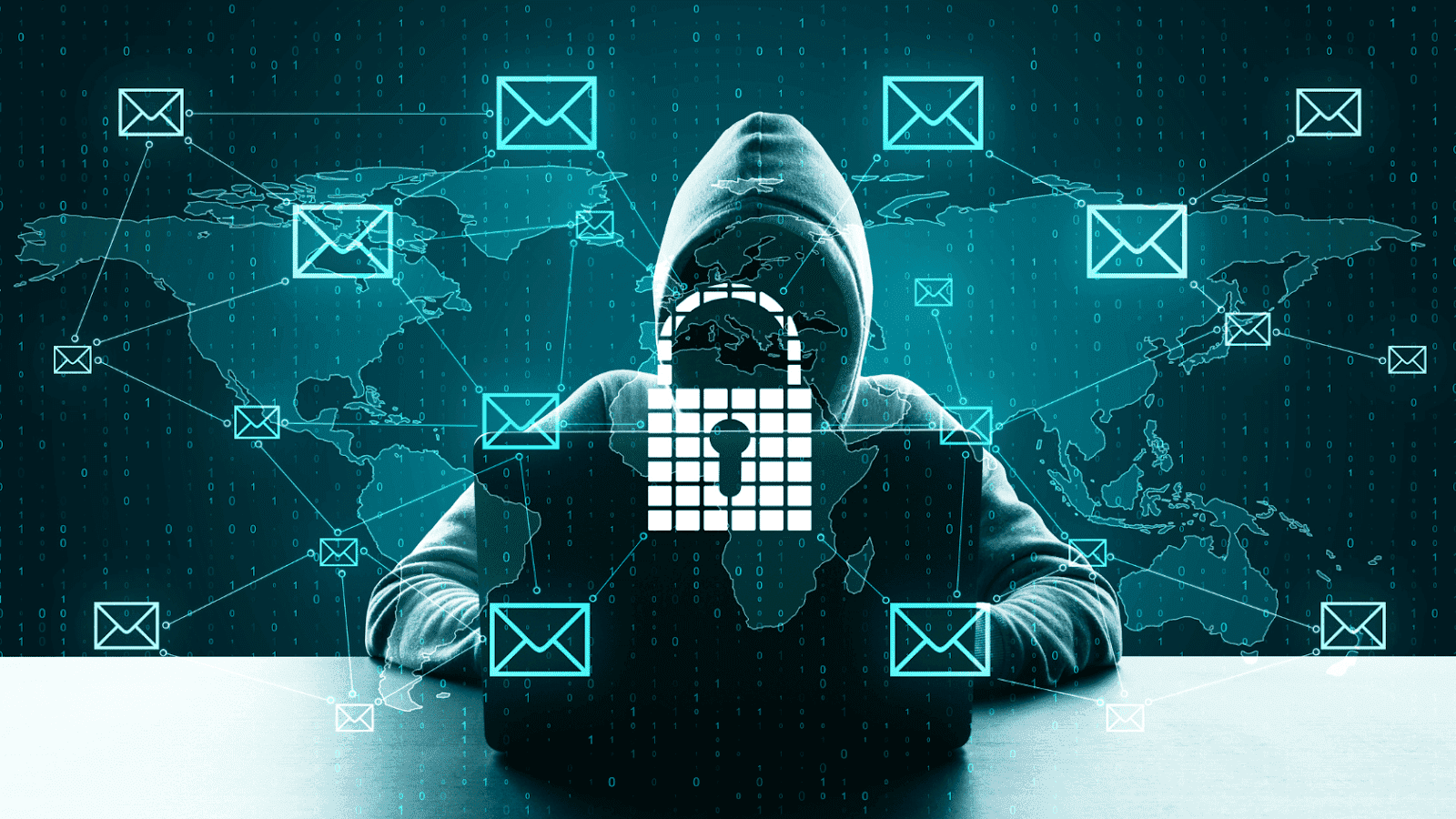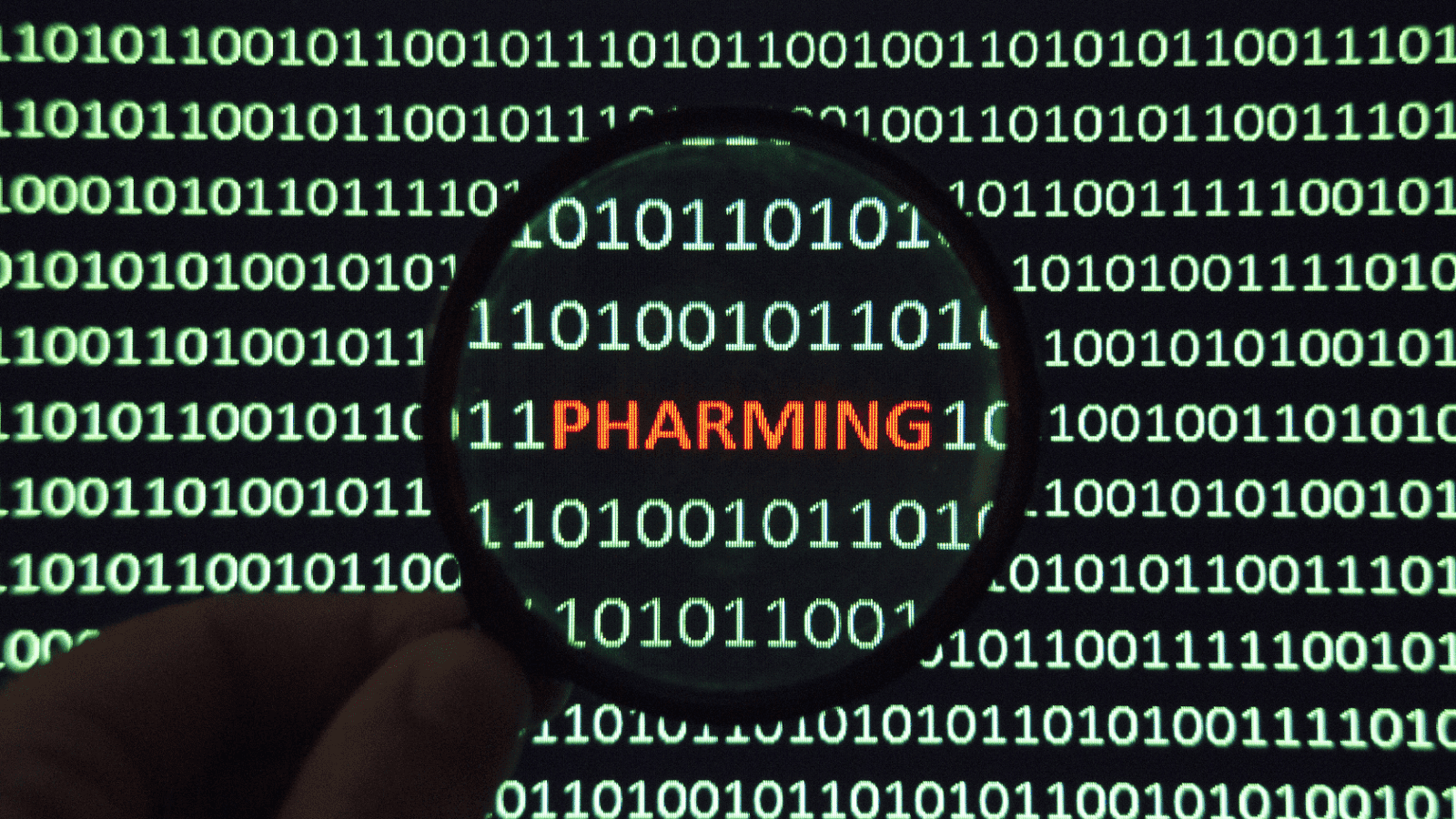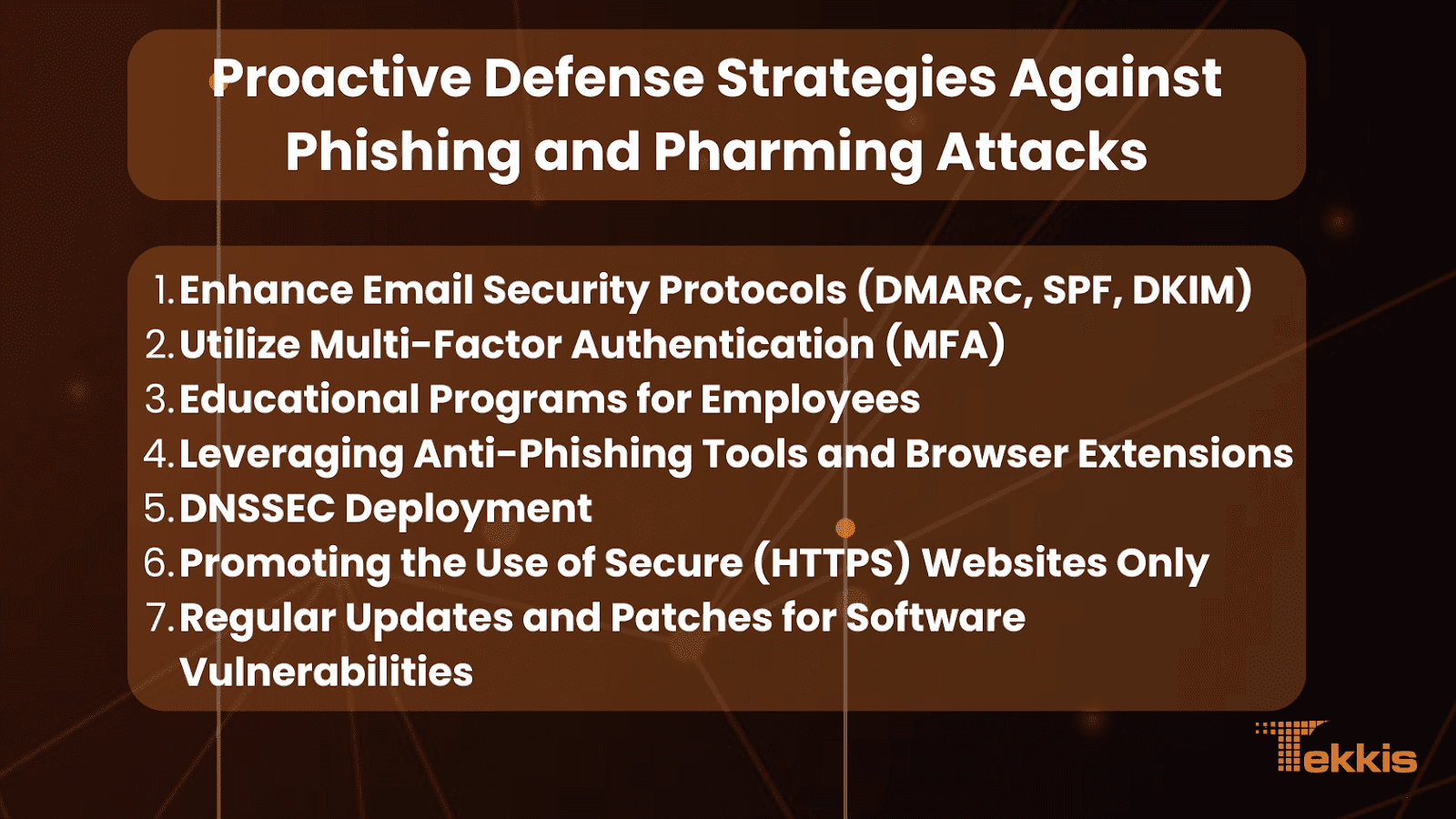Phishing vs Pharming - Spot the Threats & Stay Safe
Phishing and pharming are significant online threats that aim to trick users into revealing sensitive information like login credentials and financial details.
Phishing typically involves fraudulent emails or messages from seemingly legitimate sources, urging victims to click on malicious links or download infected attachments. In contrast, pharming subtly redirects users to fake websites by tampering with DNS settings, often without their knowledge. Even entering the correct web address can lead to a fraudulent site.
Both tactics exploit human psychology and tech vulnerabilities, highlighting the need for awareness to protect digital safety. The following sections will cover their mechanisms, real-world examples, and key differences for safer internet navigation.
To protect yourself from phishing and pharming threats, consider using Tekkis, a comprehensive cybersecurity solution designed to keep your sensitive information safe. With advanced security features and real-time protection, Tekkis helps you navigate the internet confidently. Don’t wait until it’s too late—sign up today and secure your digital life!

Detailed Exploration of Phishing
What is Phishing? Definition and Scope
Phishing is a cybersecurity threat that has become increasingly prevalent in our digital age. It's a form of social engineering attack in which malicious actors attempt to deceive individuals into revealing sensitive information or taking harmful actions. When compared to scam techniques, phishing is more targeted and sophisticated, often masquerading as legitimate communications from trusted sources.
The scope of phishing is vast and continually expanding. According to recent statistics, nearly 1.4 million new phishing sites are created monthly, highlighting the scale of this threat. Moreover, phishing isn't limited to emails; it can occur through various channels, including text messages (SMiShing), voice calls (vishing), and even fake websites (pharming).
How Does Phishing Work? Techniques and Examples
Phishing attacks typically follow a common pattern:
- Impersonation: The attacker poses as a trustworthy entity.
- Urgency: They create a sense of urgency or fear to prompt quick action.
- Action: The victim is asked to click a link, download an attachment, or provide information.
- Data theft: Once the victim complies, the attacker gains access to sensitive data.
One of the most common techniques is spam and phishing emails. These messages often appear to be from legitimate sources but contain malicious links or attachments. It's crucial to understand the difference between phishing and spoofing, as spoofing is a technique often used in phishing attacks to make emails appear to come from trusted sources.
81% of organizations worldwide have experienced an increase in email phishing attacks since March 2020, underscoring the growing threat of this technique.
Emerging Trends in Phishing: AI and Advanced Tactics
As technology evolves, so do phishing techniques. Artificial Intelligence (AI) is now being employed to create more convincing phishing attempts. These AI-driven attacks can mimic writing styles, create personalized content, and even generate realistic deepfake videos for vishing attacks.
Another emerging trend is the use of legitimate services to host phishing content. Attackers are increasingly using trusted platforms like Google Docs or Dropbox to host malicious links, making detection more challenging.
Real-World Examples of Phishing Attacks
Phishing attacks have targeted individuals and organizations of all sizes. Here are a few notable examples:
- The 2016 U.S. Democratic National Committee hack: This attack began with a spear-phishing email campaign targeting staff members.
- The 2020 Twitter Bitcoin scam: Hackers gained access to high-profile Twitter accounts through a phone spear-phishing attack on Twitter employees.
- COVID-19 vaccine phishing: In 2021, attackers impersonated health organizations to steal personal information under the guise of vaccine registration.
These examples illustrate the diverse nature of phishing attacks and their potential impact. 36% of all data breaches involved phishing in 2022, demonstrating how effective this technique remains for cybercriminals.
When considering phishing vs pharming, it's important to note that while both are deceptive practices, phishing relies more on social engineering tactics to trick users. In contrast, pharming involves technical manipulation of DNS or host files.
As phishing continues to evolve, staying informed about the latest techniques and maintaining a vigilant approach to online communications is crucial for protecting oneself against these threats.

In-Depth Look at Pharming
What is Pharming? Definition and Characteristics
Pharming in cyber security is a sophisticated form of online fraud that redirects users to fraudulent websites without their knowledge or consent. The term "pharming" is a combination of "farming" and "phishing," reflecting its nature as a more advanced and insidious threat.
Pharming cyber security threats are characterized by their ability to manipulate the fundamental infrastructure of the internet, specifically the Domain Name System (DNS). Unlike phishing, which relies on tricking users into clicking malicious links, pharming attacks can compromise an entire network or individual devices, making them particularly dangerous.
Key characteristics of pharming include:
- Invisibility to users
- Exploitation of DNS vulnerabilities
- Potential to affect multiple users simultaneously
- Difficulty in detection without proper security measures
Understanding How Pharming Works: Technical Insight
To grasp the pharming definition of cyber security, it's crucial to understand its technical aspects. Pharming attacks typically occur in two main ways:
- DNS Server Poisoning: Attackers corrupt the DNS server, which translates domain names into IP addresses. When compromised, the server directs users to malicious sites even when they enter the correct web address.
- Host File Modification: This method targets individual devices by altering the host file, which maps hostnames to IP addresses locally. When modified, the file overrides the DNS, redirecting the user to fake websites.
In both cases, the goal of pharming cyber attacks is to lead users to convincing replicas of legitimate websites, where they unknowingly enter sensitive information such as login credentials or financial details.
Different Types of Pharming Attacks Explained with Examples
- DNS Cache Poisoning: Example: In 2008, Brazilian ISPs fell victim to a massive DNS cache poisoning attack, redirecting users of several major banks to phishing sites.
- Malware-Based Pharming: Example: The "Bankash-A" Trojan, discovered in 2007, modified host files to redirect banking customers to fraudulent sites.
- Router-Based Pharming: Example: In 2015, researchers found over 300,000 home routers vulnerable to a pharming attack that could redirect users to fake banking sites.
- Man-in-the-Middle (MITM) Pharming: Example: The "DNSChanger" malware, discovered in 2011, altered DNS settings on infected computers, affecting millions of users worldwide.
Signs of a Possible Pharming Attack
Recognizing pharming security threats can be challenging, but there are several signs to watch out for:
- Unexpected certificate warnings when accessing familiar websites
- Slight differences in the URL or interface of regularly visited sites
- Requests for sensitive information on sites that typically don't require it
- Slow internet connection or unusual network behavior
- Inability to access certain websites despite a working internet connection
To protect against pharming, it's essential to implement robust pharming cyber security measures, including:
- Regular software and firmware updates
- Use of secure DNS services
- Implementation of DNSSEC (Domain Name System Security Extensions)
- Vigilant monitoring of network traffic and DNS queries
By understanding the nature of pharming attacks and staying alert to their signs, users, and organizations can better protect themselves against this sophisticated cyber threat. Remember, pharming security is an ongoing process that requires constant vigilance and up-to-date security practices.

Key Differences Between Phishing and Pharming
Understanding the difference between pharming and phishing is crucial for anyone looking to protect themselves in the digital world. While both are forms of cyber attacks aimed at stealing sensitive information, they employ distinct methods and have varying levels of complexity.
Comparison Based on Objective, Methodology, and Complexity Level
-
Objective:
- Phishing: Aims to trick individuals into voluntarily providing sensitive information.
- Pharming: Seeks to redirect users to fraudulent websites without their knowledge.
-
Methodology:
- Phishing: Primarily uses social engineering tactics through emails, messages, or fake websites.
- Pharming: Exploits vulnerabilities in DNS servers or local host files to redirect traffic.
-
Complexity Level:
- Phishing: Generally less technically complex, relying more on human error.
- Pharming: More sophisticated, requiring advanced technical skills to manipulate DNS or host files.
-
Target Scope:
- Phishing: Often targets specific individuals or groups.
- Pharming: Can affect multiple users simultaneously, potentially an entire network.
-
User Interaction:
- Phishing: Requires active user participation (clicking links, downloading attachments).
- Pharming: Can occur without any direct user action.
-
Detection:
- Phishing: Can often be detected by vigilant users who spot suspicious elements.
- Pharming: More difficult to detect as it operates at a deeper technical level.
These differences between phishing and pharming highlight the unique challenges each presents in cybersecurity.
Impact Assessment: How Both Affect Individuals and Organizations Differently
-
Individual Impact:
-
Phishing:
- Can lead to personal data theft, financial loss, and identity theft.
- Often results in compromised individual accounts.
- May cause reputational damage if social media accounts are hijacked.
-
Pharming:
- Can affect multiple accounts simultaneously as users unknowingly visit fake versions of trusted sites.
- Potentially more damaging as users may not realize they're on a fraudulent site.
- Can lead to more extensive financial losses and identity theft.
-
Phishing:
-
Organizational Impact:
-
Phishing:
- Can result in data breaches if employees fall for the scam.
- May lead to financial losses through fraudulent transactions.
- Can damage brand reputation if customer data is compromised.
-
Pharming:
- Can affect entire corporate networks, potentially compromising vast amounts of data.
- May lead to significant financial losses and long-term damage to customer trust.
- Can disrupt business operations if critical systems are affected.
-
Phishing:
-
Scale of Impact:
- Phishing: Impact is often limited to those who directly interact with the phishing attempt.
- Pharming: Can have a wider impact, affecting all users of a compromised DNS server or network.
-
Recovery and Mitigation:
- Phishing: Recovery often involves changing compromised passwords and enhancing user education.
- Pharming: Requires more complex technical solutions, including DNS server fixes or network-wide changes.
Understanding what is the difference between phishing and pharming is essential for developing effective cybersecurity strategies. While phishing relies more on human error and can often be mitigated through user education, pharming requires more robust technical safeguards and system-level protections.
Both threats pose significant risks to individuals and organizations, but their differing methodologies necessitate distinct approaches to prevention and mitigation. By recognizing these differences, users and organizations can better prepare themselves against these evolving cyber threats.

Proactive Defense Strategies Against Phishing and Pharming Attacks
It's crucial to understand what a pharming attack is and how to protect against both pharming and phishing threats. Let's explore some effective strategies to safeguard your digital presence.
Best Practices to Mitigate Phishing Risks:
Enhancing Email Security Protocols (DMARC, SPF, DKIM)
Implementing robust email security protocols is essential in combating phishing attempts:
- DMARC (Domain-based Message Authentication, Reporting, and Conformance): This protocol helps prevent email spoofing by verifying that the sender's email is actually from the domain it claims to be from.
- SPF (Sender Policy Framework): SPF specifies which mail servers are authorized to send emails on behalf of your domain.
- DKIM (DomainKeys Identified Mail): This protocol adds a digital signature to outgoing emails, allowing recipients to verify that the email hasn't been tampered with in transit.
By implementing these protocols, organizations can significantly reduce the risk of phishing emails reaching their employees' inboxes.
The Role of Multi-Factor Authentication (MFA) in Prevention
Multi-factor authentication adds an extra layer of security beyond just a password. Even if a phishing attack successfully captures a user's password, MFA can prevent unauthorized access by requiring additional verification, such as a fingerprint scan or a code sent to a mobile device.
Educational Programs for Employees on Recognizing Suspicious Emails
Human error remains one of the most significant vulnerabilities in cybersecurity. Regular training sessions can help employees:
- Identify common phishing tactics
- Recognize suspicious email characteristics
- Understand the importance of verifying sender identities
- Know how to report potential phishing attempts
Leveraging Anti-Phishing Tools and Browser Extensions
Various tools and browser extensions can provide real-time protection against phishing:
- Email filters that detect and quarantine suspicious messages
- Browser extensions that warn users about potentially malicious websites
- Anti-phishing toolbars that provide safety ratings for websites
Best Practices to Counteract Pharming Threats:
Understanding what a pharming attack is forms the foundation for effective defense. Pharming redirects users to fraudulent websites, often without their knowledge. Here are some strategies to counter this threat:
DNSSEC Deployment: An Advanced Measure for DNS Security
Domain Name System Security Extensions (DNSSEC) adds an extra layer of authentication to DNS queries. This helps prevent DNS poisoning, a common method used in pharming attacks. By verifying the authenticity of DNS responses, DNSSEC ensures that users are directed to legitimate websites.
Promoting the Use of Secure (HTTPS) Websites Only
Encouraging the use of HTTPS-only websites can significantly reduce the risk of pharming attacks. HTTPS ensures that:
- The website's identity is verified
- Data transmitted between the user and the website is encrypted
- Any tampering with the data in transit is detectable
Users should be trained to look for the padlock icon and "https://" in the address bar before entering sensitive information on any website.
Regular Updates and Patches for Software Vulnerabilities
Keeping all software, including operating systems, browsers, and security tools, up-to-date is crucial in preventing pharming attacks. Regular updates often include patches for newly discovered vulnerabilities that could be exploited in pharming attempts.
Additional measures to protect against pharming include:
- Using trusted DNS servers
- Regularly scanning for malware that could modify local host files
- Implementing network monitoring tools to detect unusual DNS activity
By implementing these proactive defense strategies, individuals and organizations can significantly reduce their vulnerability to both phishing and pharming attacks. Remember, cybersecurity is an ongoing process that requires constant vigilance and adaptation to new threats.

Summary of Key Takeaways
As we wrap up our exploration of phishing and pharming, it's crucial to recap the essential points to help you stay safe:
-
Understand the threats:
- Phishing relies on social engineering to trick users into revealing sensitive information.
- Pharming is a more technical attack that redirects users to fraudulent websites without their knowledge.
-
Recognize the differences:
- Phishing typically requires user interaction, while pharming can occur without direct user action.
- Pharming is often more challenging to detect and can affect multiple users simultaneously.
-
Implement robust security measures:
- For phishing: Use email security protocols (DMARC, SPF, DKIM), multi-factor authentication, and employee education programs.
- For pharming: Deploy DNSSEC, use HTTPS-only websites and keep software updated.
-
Stay vigilant:
- Be cautious of unexpected requests for personal information.
- Verify website URLs and look for HTTPS before entering sensitive data.
- Keep an eye out for unusual network behavior or certificate warnings.
-
Educate and update:
- Regularly train employees and family members on recognizing cyber threats.
- Stay informed about emerging attack techniques and update your security strategies accordingly.
-
Use protective tools:
- Leverage anti-phishing browser extensions and email filters.
- Employ network monitoring tools to detect unusual DNS activity.
-
Act quickly if compromised:
- If you suspect you've fallen victim to a phishing or pharming attack, change your passwords immediately.
- Report the incident to relevant authorities and your IT department if applicable.
Remember, cybersecurity is an ongoing process. By staying informed, implementing strong security practices, and remaining vigilant, you can significantly reduce your risk of falling victim to phishing and pharming attacks. Your digital safety is in your hands – stay alert and stay safe!
If your organization is looking to enhance its IT security, Tekkis provides customized solutions that cater to your specific requirements. Reach out to us today to discover how we can strengthen your cybersecurity defenses and protect your digital assets from new threats. Together, we can create a secure and efficient IT environment for your business in Denver!



